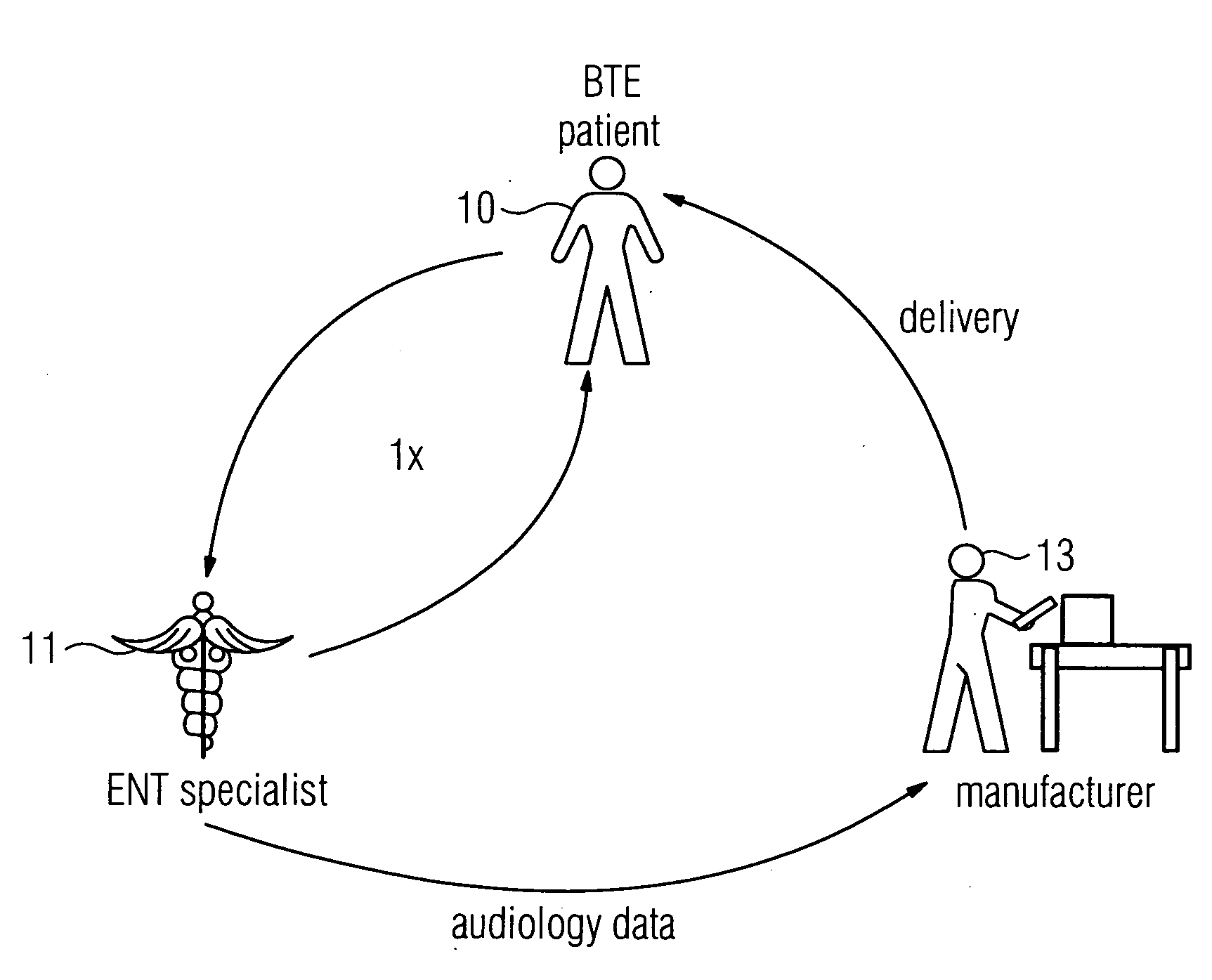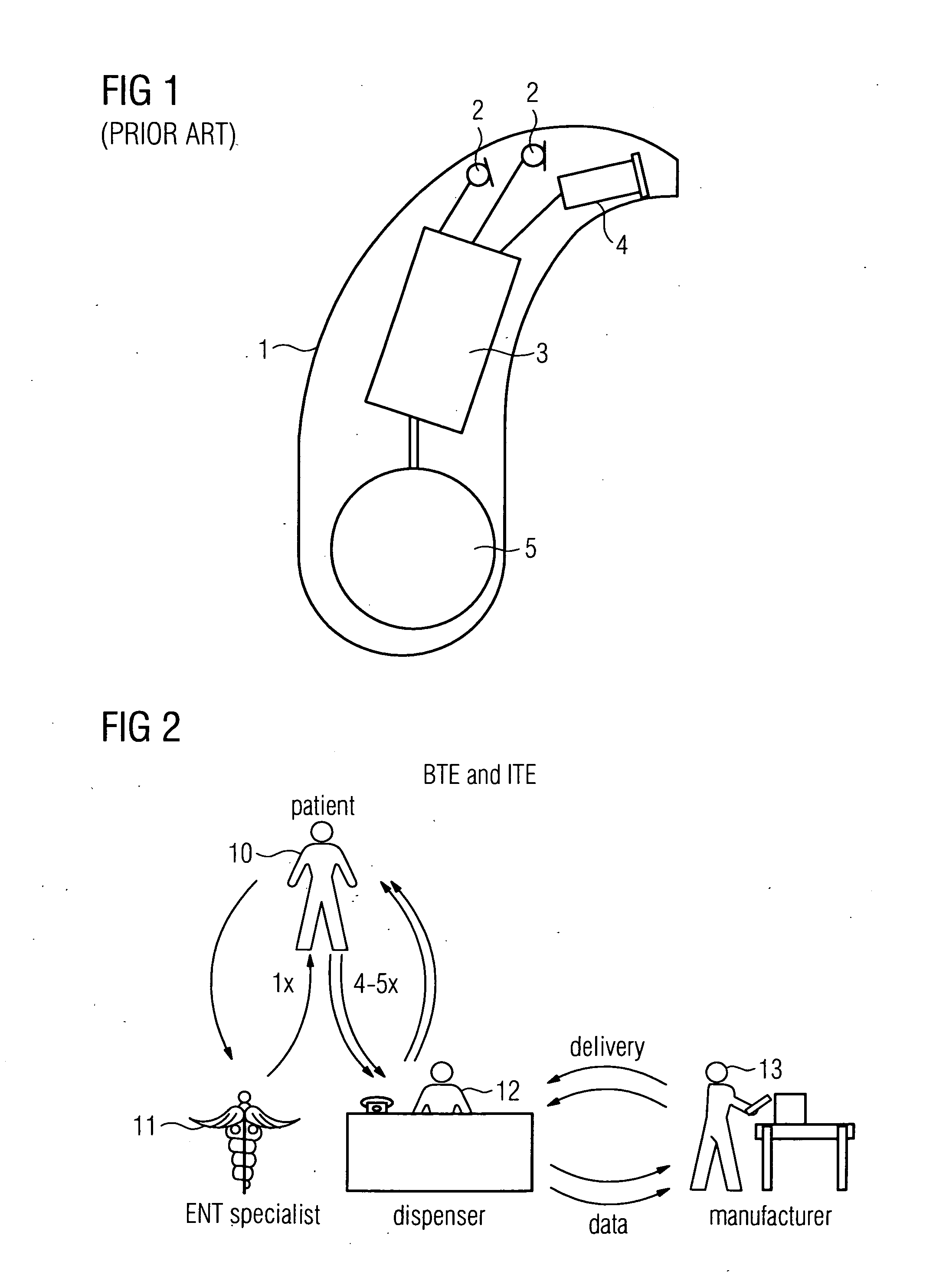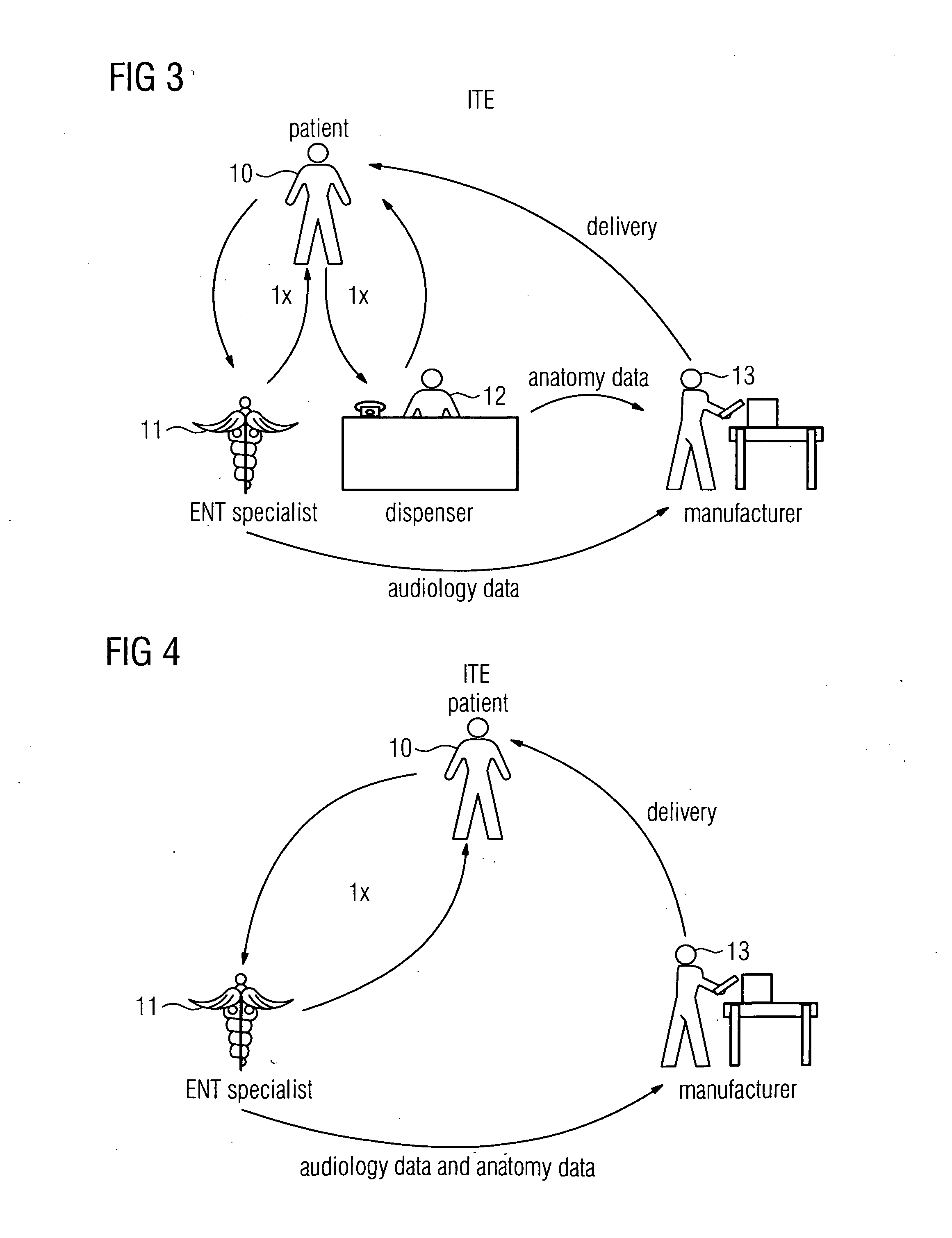Method for adapting a hearing aid by a perceptive model
a perceptive model and hearing aid technology, applied in the direction of hearing aid design aspects, deaf-aid sets, electric devices, etc., can solve the problems of poor patient management, long waiting time for patients, complex signal processing algorithms of hearing aids, etc., and achieve the effect of reducing the waiting time for the manufacture or adaptation of individual hearing aids
- Summary
- Abstract
- Description
- Claims
- Application Information
AI Technical Summary
Benefits of technology
Problems solved by technology
Method used
Image
Examples
Embodiment Construction
[0023]The exemplary embodiments explained in more detail below represent preferred embodiments of the present invention.
[0024]Firstly, for a better understanding of the invention, a workflow arrangement for adapting a BTE or ITE hearing aid without the assistance of a perceptive model is explained with the aid of FIG. 2. Accordingly, a patient 10 goes to an ENT (ear, nose and throat) specialist, to have his hearing examined. The ENT specialist 11 takes an audiogram of the patient 10 or obtains other data which map the hearing loss and makes a corresponding diagnosis. The patient 10 therefore has to visit the ENT specialist 11 at least once for the diagnosis to be made.
[0025]With the diagnosis, the patient 10 goes to an acoustician (dispenser) 12), who generates another audiogram of the patient 10. In addition, the acoustician 12 advises the patient 10 on the choice of a hearing aid. If necessary, for an ITE hearing aid the acoustician takes an impression of the patient's ear. The ac...
PUM
 Login to View More
Login to View More Abstract
Description
Claims
Application Information
 Login to View More
Login to View More - R&D
- Intellectual Property
- Life Sciences
- Materials
- Tech Scout
- Unparalleled Data Quality
- Higher Quality Content
- 60% Fewer Hallucinations
Browse by: Latest US Patents, China's latest patents, Technical Efficacy Thesaurus, Application Domain, Technology Topic, Popular Technical Reports.
© 2025 PatSnap. All rights reserved.Legal|Privacy policy|Modern Slavery Act Transparency Statement|Sitemap|About US| Contact US: help@patsnap.com



